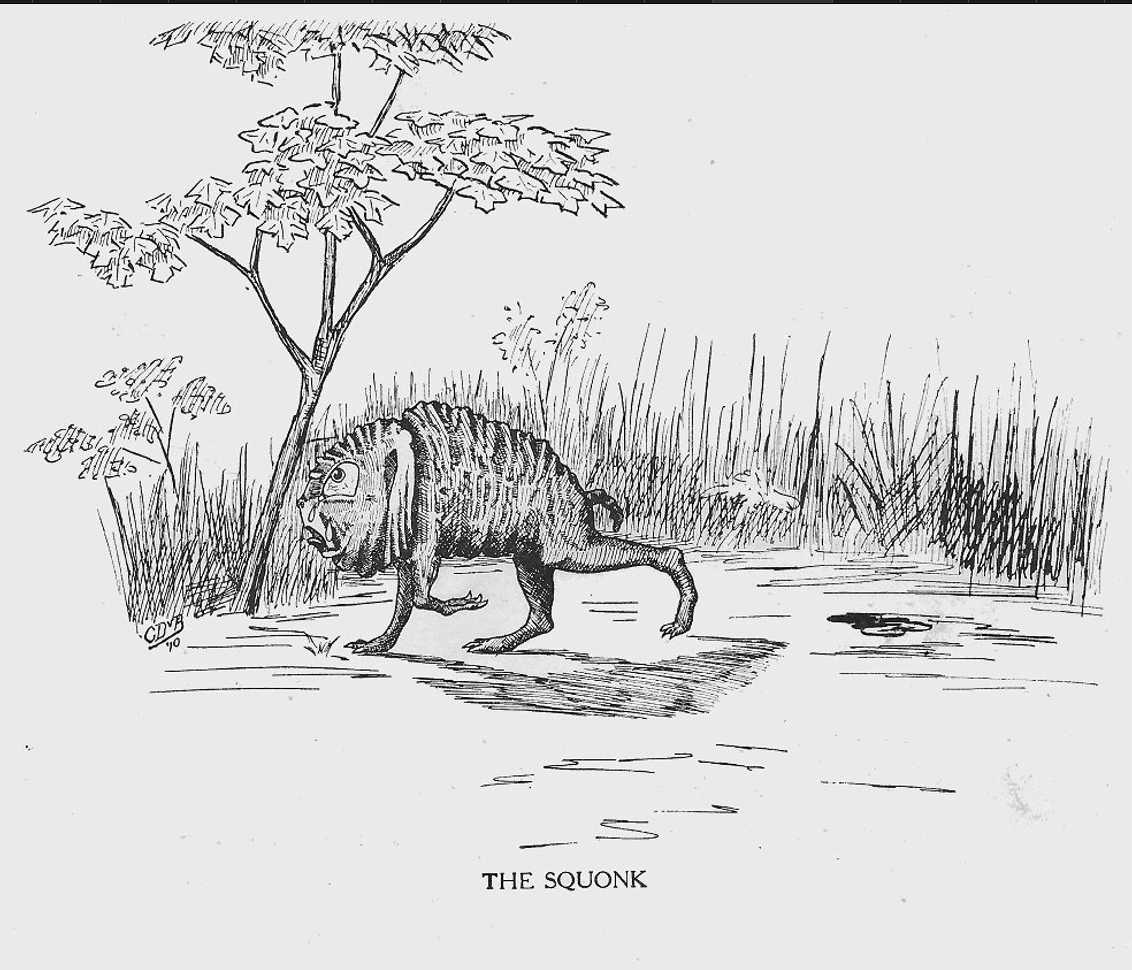It is believed that the Squonk, a legendary monster, inhabits the hemlock woods in the north of Pennsylvania of, the United States. This creature is mythical because it is said to be the coziest of all Pennsylvanian living beings. The genesis of the Squonk legends may be traced back to the late nineteenth century, when Pennsylvania was at the pinnacle of its logging and hunting industries. The Squonk was supposedly a terrible woodland creature, its skin grotesquely flabby and covered with warts and deformities.
First mentioned in “Any Major Dude Will Tell You,” Of 1974 and then made famous by the English rock boy band called Genesis in their album ‘A Trick of the Tale‘ which included a song of the same name in 1976 as a tribute to the mythical creature’s suffering and tormented life. Lacrimacorpus dissolvens, the name of the beast’s taxonomy, is derived from the Latin words for tear—lacrimal, body—corpus, and dissolve—dissolves.
In Hal Johnson’s 2015 adaptation of Fearsome Creatures, the Squonk is biologically and psychologically a pig. It has warts and cauliflower ears that are coated with wax and hair. It has twisted, yellow teeth and eyes with constant discharge, always crying. Unless the right hind limb is translucent, it has four limbs or three and a half. Its most terrifying feature is its infectious sadness.
Also Read: Little Green Men: The Alien And The Human
Habitat In Mythical Beliefs
There is no evidence of the squonk narrative being recounted in Pennsylvania before William Cox’s book “Fearsome Creatures of the Lumberwoods,” published in 1910, which contains the oldest recorded narrative of the critter. The following written version, from the publication Fearsome Critters, printed in 1939, contended that the animals had moved from swamps to the sandy deserted regions before settling in Pennsylvania.
The beast’s” relocation to Pennsylvania may have been caused by logging camps constantly shifting in the early twentieth century. Johnson said the critter resided in the Pocono Mountains. According to Cox, who gave the critter the nomenclature Lacrimacorpus dissolvens, this is how he described it in his book.

According to him, the typical habitat for the animal is high plains with lush desert flora. He said that the animal’s spread was previously rather vast. The Squonk was compelled to resort to the water as these habitats eventually turned into marshy, lake-dotted land. It had a poor mindset and repeatedly went about the unfamiliar wetlands in quest of feed. Over age, only its left feet immersed in the water began to sprout webbing amongst their toes.
Since it was limited to swimming in circles after entering the sea, it could not return to land. According to fossil bones retrieved from the lake beds, thousands died of famine as a result of this. The charming creature is largely unknown outside of Pennsylvania. The Squonk is most active during sunset and sunrise.
Also Read: The Specter Moose: The Ghostly Creature That Haunts Maine
Woeful Appearances
It is perpetually dissatisfied due to its misaligned skin adorned with moles and warts. A squonk leaves a tear-stained path that hunters skilled in tracking may follow because the animal is continuously repulsed by how it looks. Squonks are said to move most slowly at night when there is a full moon because they attempt to avoid seeing their hideous look in any lighted-up water bodies.
Therefore, squonk hunters have the most luck on chilly moonlit evenings when the critter is reluctant to move about and spills its tears slowly; at such times, it may be noticed sobbing beneath the wreaths of gloomy hemlock groves. However, catching it was not simple.

It melts into tears when besieged and escape becomes unattainable or when shocked and terrified. Mr. Jean-Paul Wentling, previously of Pennsylvania and Hal Johnson’s arch-enemy and nowadays residing in Minnesota, was alleged to have been in a bad incident with a squonk around Mont Alto. He captured the Squonk by imitating it and getting it to jump into a bag he had brought home until the weight became lighter and the sobbing stopped.
Opening the sack, Wentling and peered inside. Nothing but froth and tears existed. Although these tales are regarded as fakelore, certain compounds are stable in solutions or other primitive forms. Still, they cannot be separated or collected without stimulating their breakdown or polymerization in chemistry, taking up the mantle and being called ‘chemical squonk.’ It shows how much this myth has webbed its feet into modern culture.
Also Read: Who Was Frank Pesce? Everything To Know




